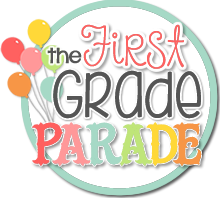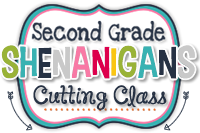I am really excited about using Bloom's Taxonomy math talk cards in my
classroom! Earlier I wrote a post about how I love using Bloom's
Taxonomy in my classroom for reading. You can read about it by clicking
here.
I found it so easy to implement Bloom's Taxonomy into my reading
instruction and my students LOVE asking and answering higher level
questions to each other. In fact, we use the fiction and nonfiction
question cards each week in my class since they love to earn points by
answering the questions correctly. I catch them quietly saying how many
points they have to themselves such as, "Yes!...5 more points so now I
have 17 points!" This activity also helps increase your class
participation Big Time especially with your competitive kiddos!
Since my students love using Bloom's in reading to enhance their comprehension and critical thinking, I thought it would be a great idea to also implement Bloom's when we discuss our math tasks and word problems. Let me walk you through my math block to show you how I use Bloom's Taxonomy in math.
Math Task
For morning work, my students are given a word problem or math task to solve. I like to change up the types of tasks I use so sometimes I use ones from the Task Arcs given to us by the state department or depending on the skill we are learning, I like to use the ones pictured above from Lakeshore Learning. After I assign the task, I then
have my students solve the problem independently. We call it our
"private think time". I then have them place their work in their small group math bin so we can discuss it together during our small guided math group time.
Guided Math Small Groups
During our small group math task discussion we reread the problem aloud slowly to the group. I tell them to read it slowly so they can visualize what is happening in the problem and what the problem is asking us to do. Students then underline the question. After reading and analyzing the word problem, they circle the numbers and key word(s) they need to solve the problem. I only have 4 students in each group so I have them pair up at the table to discuss how they solved their problem to their partner. Partner A goes first (the student on the right) while Partner B listens to understand. Then they reverse roles. I take turns listening to both sets of partners to see if they
understand how to solve the problem or if they need additional
guidance. This is a great way to clear up any misconceptions they may
have before moving on. As they are teaching how they
solved their problem to their partner they usually catch their own mistakes and
fix them before their partner even knows they made a mistake! I like hearing all of their different strategies that they use to solve the problem and their justifications for why they chose that strategy.
Next, they get to ask each other questions about how they solved their problem using the Bloom's Taxonomy Math Question Cards. I keep these question cards on a ring at their tables so each of my students have their own set of cards to flip to the question they want to ask. I also keep a full set of cards for me to use at my guided math table.
Bloom's Taxonomy Math Question Game
After both sets of partners ask each other questions about how they solved their problem, we then play the Bloom's Taxonomy question game together at our guided math group table. If you have a stand up pocket chart, you can place the cards as shown in the picture above to have students select questions like a game show. If you don't have a stand up pocket chart, you can use a regular pocket chart or just ask them the questions from the question card ring. Students take turns rolling a die. The number they roll determines the number of point level question they will answer. (Example: If they roll a 5, they will answer a blue evaluate question worth 5 points.) Once we ask a question from that point level, you can choose to turn the 5 card over so they can only answer questions from the other levels, or you can have them continue to play with all of the levels. Simply remove the card they just answered and place it behind the other cards they have not answered. When a student answers the question correctly, he or she will earn points based on the color of their card. Students can keep score mentally or add to track their points on an index card or piece of paper. What a fun time we have promoting higher level thinking!
Independent Practice
Sometimes I like to have my students demonstrate what they have learned from the task by using Bloom's Taxonomy to explain their thinking independently. This way, I can evaluate what I still need to work on with my students.
Our Think Tank
Our think tank is used as a wrap up activity when we discuss as a class the different
strategies we used to solve the problem. I usually choose 3-4 students to come
up and discuss how they solved the problem. I then label it their way
(Example: Sandy's Way) in addition to the correct name of the strategy. This helps students understand the different ways to
solve problems so they can choose one of their classmate's ways of
solving it the next time they solve a math task. I love to see the
students teaching each other and being proud of their learning!
I hope your students enjoy using Bloom's Taxonomy in your classroom as much as mine do! Click here to get these fun math question cards for your classroom!






























